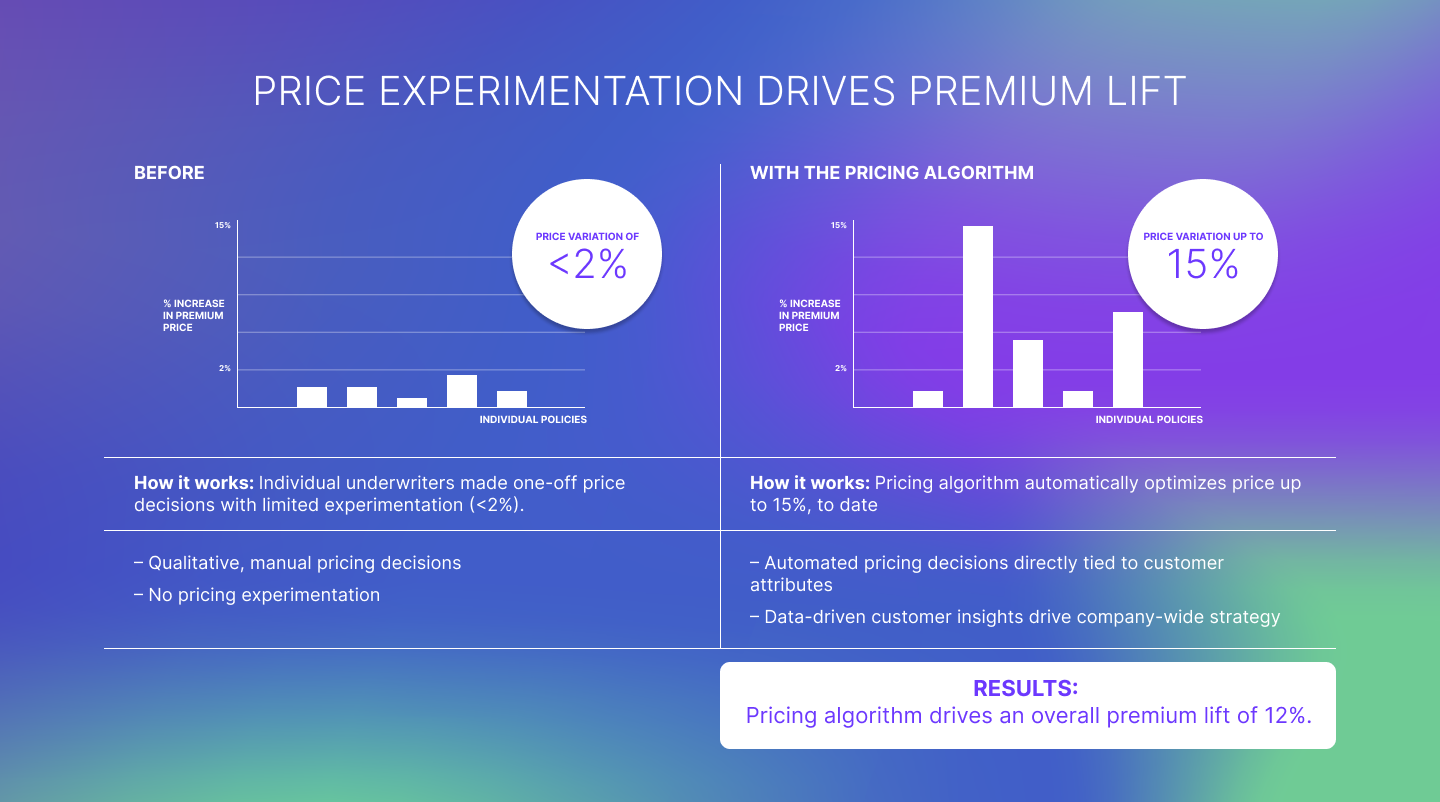Tribe was approached by an insurance company that wanted to figure out how to use ML to turn existing data into a business asset that streamlined processes, provided insights, and eventually drove revenue.
“We engaged Tribe because we believe that machine learning will power the future of our business,” said the insurance company COO. “But we’re insurance experts, not statisticians.”
Tribe began a discovery project, bringing in a PM with experience scoping high value machine learning (ML) projects. Over a few weeks the team explored a variety of paths that would give the company more insight into its business – everything from calculating customer lifetime value to profit estimation.
“They already had a capable team and access to a decent amount of data,” says Nathan, the Tribe Product Manager on the project. “What they really needed help with was answering the question: what do we want to get out of this as a business? Eventually we aligned all the stakeholders around this idea of optimizing pricing as the greatest value to the business and then we scoped the project from there.”
“[The company] already had a capable team and access to a decent amount of data. What they really needed help with was answering the question: what do we want to get out of this as a business?"
Nathan, Tribe Product Manager
The team
Once the scope of the project was clear, Tribe assembled a team to make it happen, starting with Gabe, an ML engineer with expertise running high value ML experiments in a live business environment. Next came Nathan, a product manager who had previously run the pricing team at a leading fintech company. From there, the team built a custom pricing algorithm as well as an experiment to collect the data the ML model would need to optimize premiums on a larger scale.
“The intelligence factor of the team really impressed me out of the gate,” said the COO. “How fast they understood our business and what we were trying to do. It’s very rare you meet a person like Gabe who has the technical skills to understand your data, turn it into something actionable, and also communicate the value to us as the business guy.”
“The intelligence factor of the team really impressed me out of the gate. How fast they understood our business and what we were trying to do."
COO, Insurance Company
The experiment
There were a number of challenges around building an ML model to optimize pricing. First, the model would be collecting data in a live business environment, where everything from distributors to the underlying price structure was constantly changing. Second, the company didn’t yet have the ideal data to train an ML model.
Historically, price fluctuations had been limited because underwriters were making manual, one-off decisions around pricing adjustments, which tended to be in a fairly narrow range of less than 2%. So the customer had essentially never seen what would happen if the price increased by 5% or even 15%.
To address this, the Tribe team designed an experiment that would allow them to collect the data the algorithm would need to optimize premiums on a larger scale. “Because of these limitations, we couldn’t conduct a true blind trial,” said Gabe. “So we came up with an intermediate experiment based on the hypothesis that the more likely a customer was to convert, the less they’d care about a bump in the price.”
“So most customers got potentially up to a 5% boost,” said Gabe, “but those that were fairly likely to convert saw up to a 15% change in price. This let us see what would happen at different price points and different conversion buckets.”
This intermediate approach allowed the Tribe team to generate an immediate 2.5% premium lift across the company and also gain the insights needed to apply the strategy to a broader pricing model.
“What we saw was that the company saw an ROI in the first week,” Nathan says. “That’s almost never happened in my 20-year career.”
“The company saw an ROI in the first week."
Nathan, Tribe Product Manager

The results
“We wanted to bring the way we do pricing to the next level, so we’re not leaving money on the table,” said the COO. “For us and for our carriers.”
Once the experiment had proven its value, Tribe expanded the team to include Marcus, a nuclear physicist turned ML product manager who had previously run the pricing team at a leading fintech company.
“For nearly five years, I’d been focused on A/B testing around price in terms of impact, elasticity, and the price demand curve,” said Marcus. “So I was very excited to come on this project.”
As the team rolled out updates, the impact of the pricing model became clear. If the dynamic pricing model was expanded to include all policies, not just the test bucket, the company could expect to see a 7-12% lift in premiums across the company.
“At this point, we’ve gone beyond just running experiments,” said Marcus. “We’re really their data science team. They view ML as critical to their success. So we’re here to talk through technical topics and make sure they have the information they need to decide what’s right for their business.”
The team is already eyeing future projects – from fine tuning the pricing model to full portfolio optimization. “Beyond the premium lift, going through this exercise really affirmed for us how much more we can do with data and machine learning,” said the COO. “It gave us insights on our book of business and uncovered more areas we can use data to make smarter decisions moving forward.”
“Beyond the premium lift, going through this exercise really affirmed for us how much more we can do with data and machine learning. It gave us insights on our book of business and uncovered more areas we can use data to make smarter decisions moving forward.”
COO, Insurance Company



























